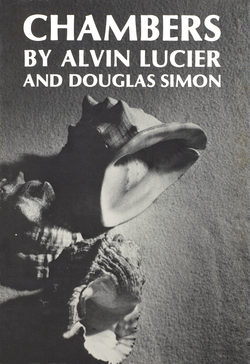Читать книгу Chambers - Alvin Lucier - Страница 6
На сайте Литреса книга снята с продажи.
PREFACE
ОглавлениеI first met Alvin Lucier in 1968 when he came to Wesleyan University, where I was an undergraduate, to offer a course in new music. He was still teaching at Brandeis University then and traveled to Middletown, Connecticut, once a week from Waltham, Massachusetts. It was an exciting class that had a strong influence on my own ideas, and when I chose a subject for an honors thesis in 1969, I decided to write on Alvin’s work.
At that time, I was most familiar with his piece Chambers. I had watched it taking shape in 1968 and had helped perform it more than once by the time I began my project, so it seemed a good candidate for my choice of subject matter. A major portion of the thesis was to be devoted to a careful, objective description of a single performance of Chambers at the Museum of Modern Art in New York, in which I had performed, and I felt I needed a block of personal information from Alvin to balance that. If the description of the piece were to be of a specific performance, the idea of a specific conversation, an interview, seemed a promising parallel. And so it was.
In December of 1968, we sat in the greenroom of the Slosberg Music Center at Brandeis, a very resonant, intimate space, and talked with each other. I have a clear memory of the effort involved in making oneself understood with a tape recorder running, but Alvin and I were both pleased with the results.
When we examined the transcription, we found more to please us. Alvin felt his ideas were stimulated and organized by the questions and enjoyed seeing his thoughts on paper. I appreciated that, and also found that his observations and, perhaps more importantly, his mode of expression suggested several lines of inquiry in my thesis. We were soon excited about the possibilities of continuing the interviews, and we decided to conduct several more with an eye toward publication. Of the many we did, the best ones were always those devoted to particular compositions, and we grew to accept that as the organizing influence in the book.
Alvin is a stutterer, and so has always to be prepared to say something unexpected. I consider this his verbal signature. The kind of compositional decisions discussed here seem all the more revealing to me in the light of this enforced verbal flexibility. To me, Alvin’s explanations of his acceptance of multi-level images in the realization of his ideas (the crickets in Vespers, the campfire in Tyndall Orchestrations) seem to be truly sympathetic to his verbal character.
I’d like to suggest that Alvin’s scores, included here as the formal representations of his compositions, may be illuminated by the interviews, informal representations of the same procedures. They are about his music while they are like his music. With this in mind, the reader (who perhaps will also have the opportunity to attend one or more of Alvin’s performances) may in fact experience a significant portion of a working artist’s reality over an extended and productive period of his career.
Douglas Simon
New York—1978
